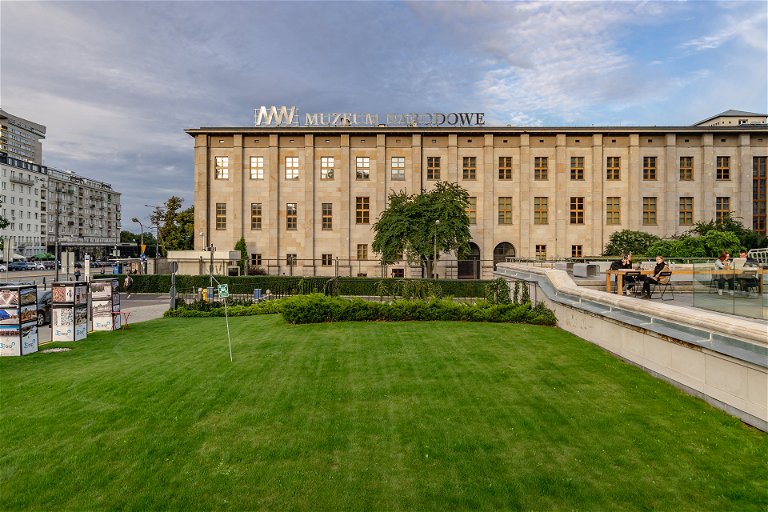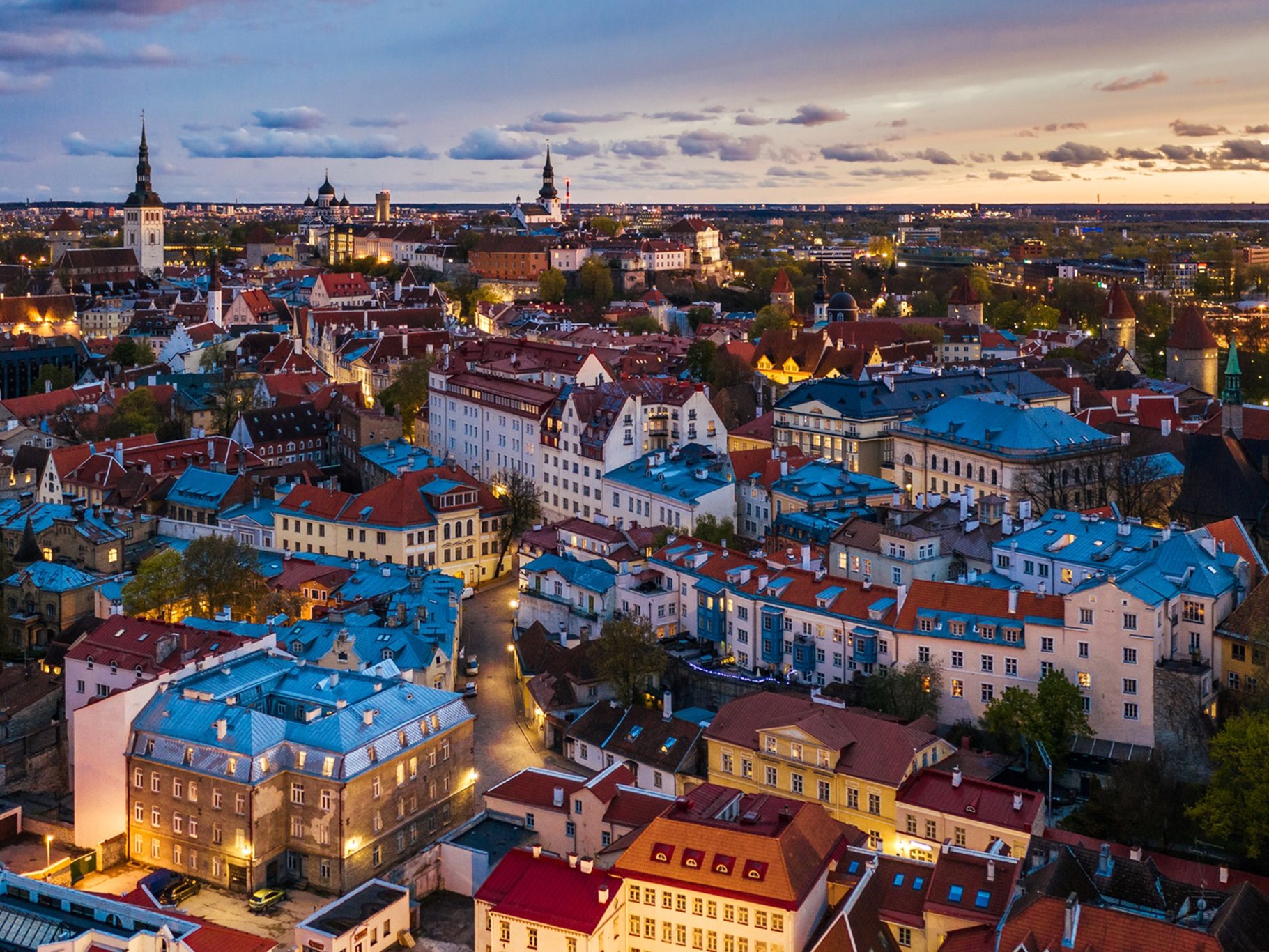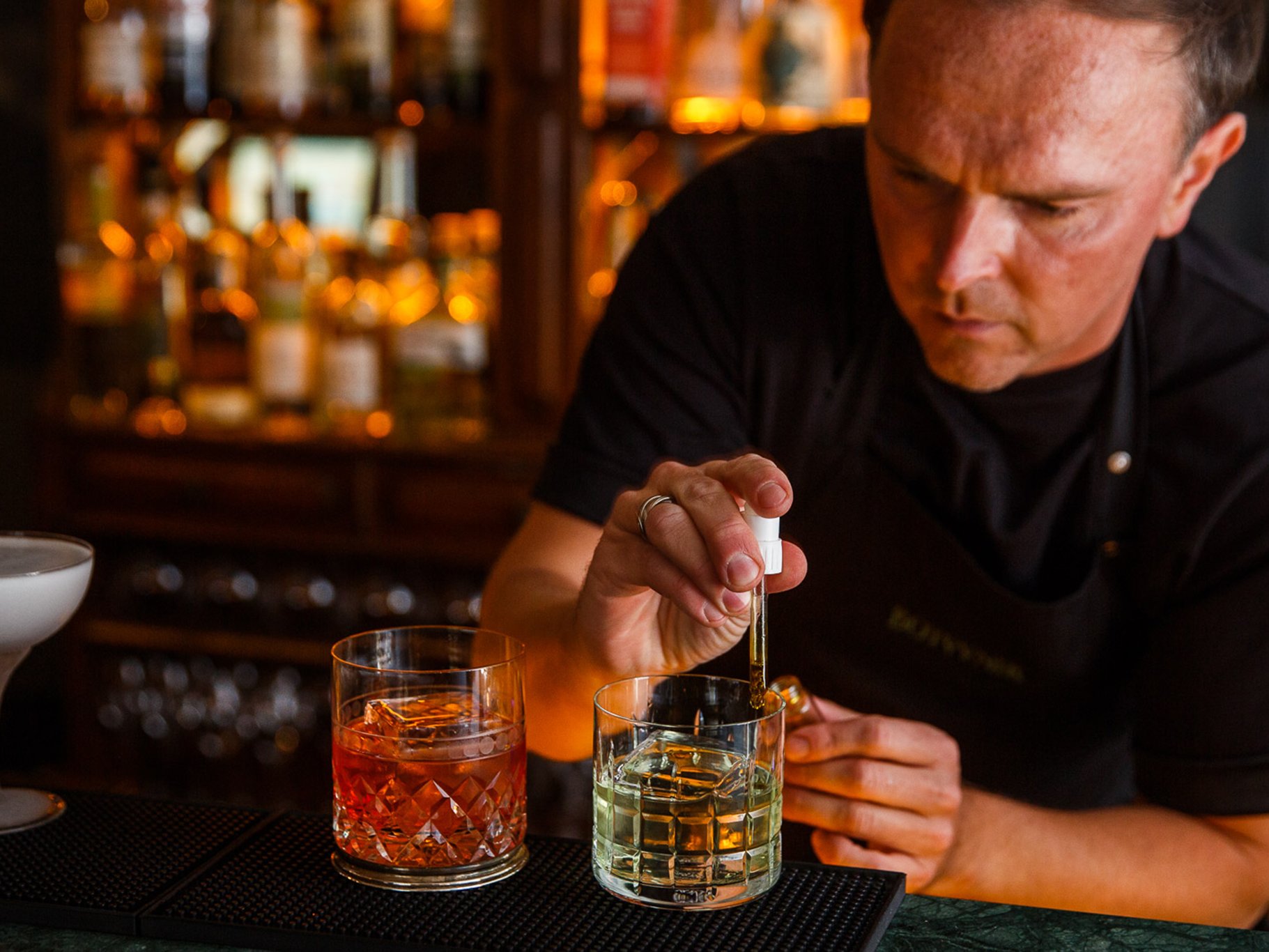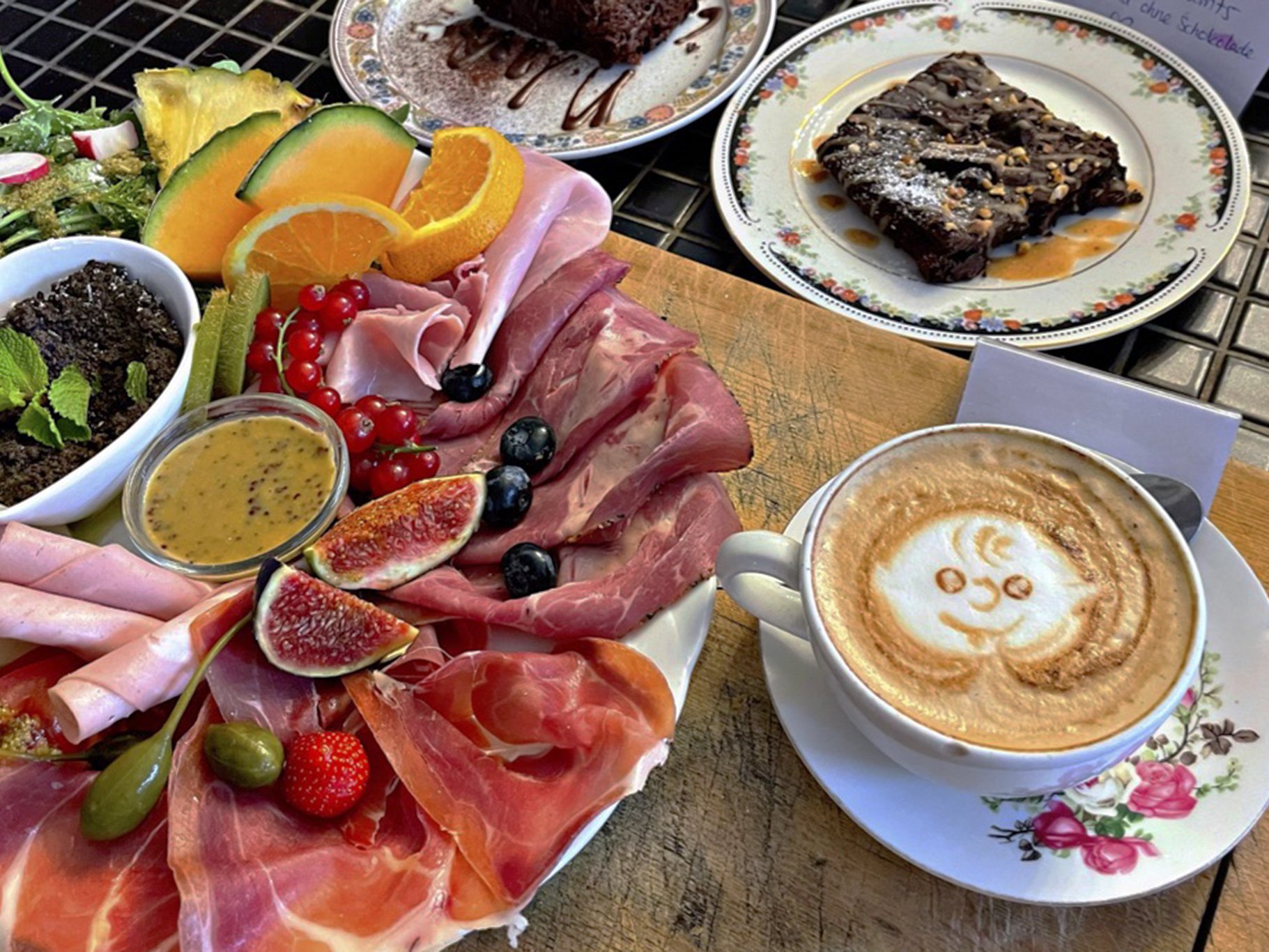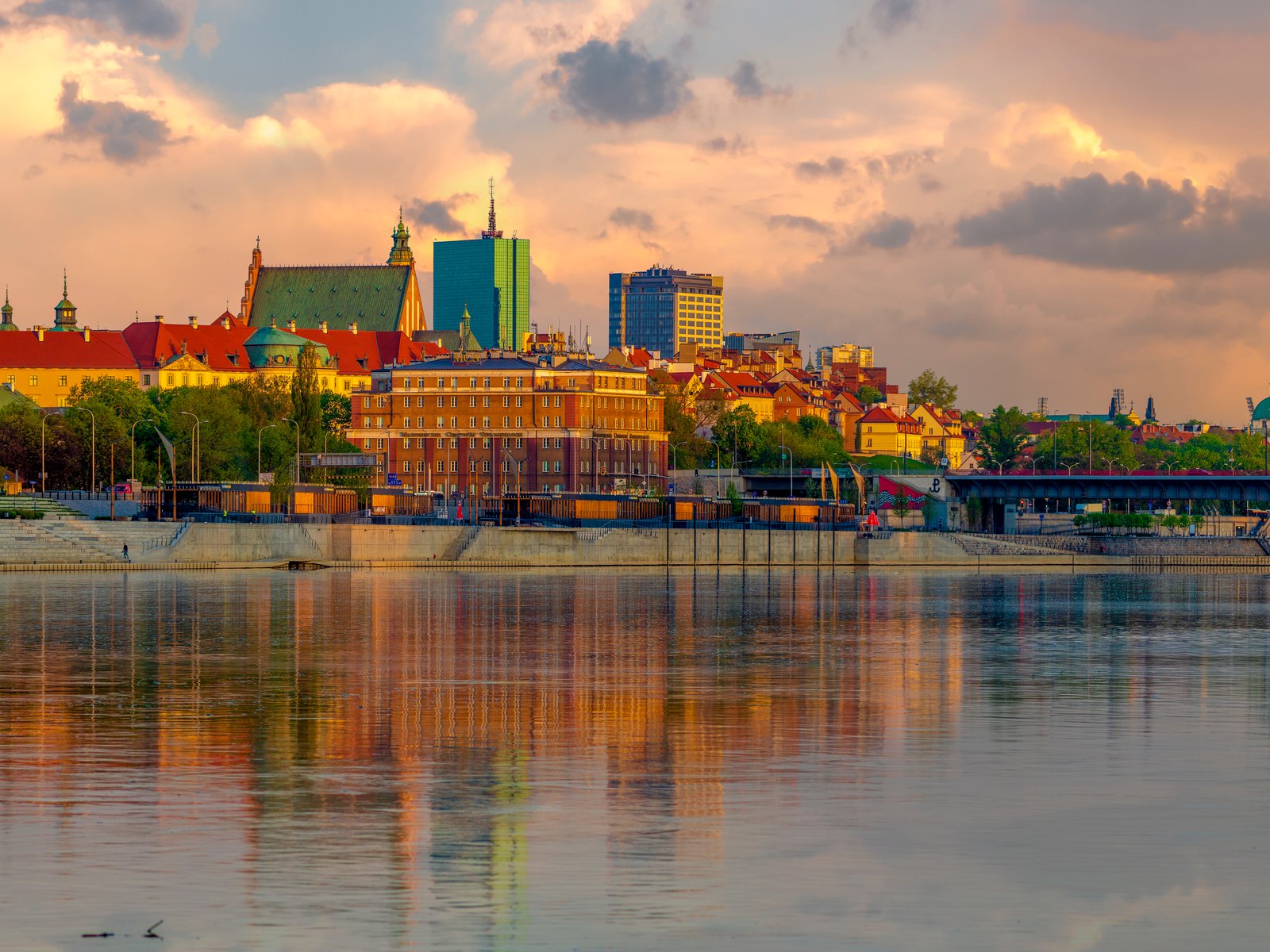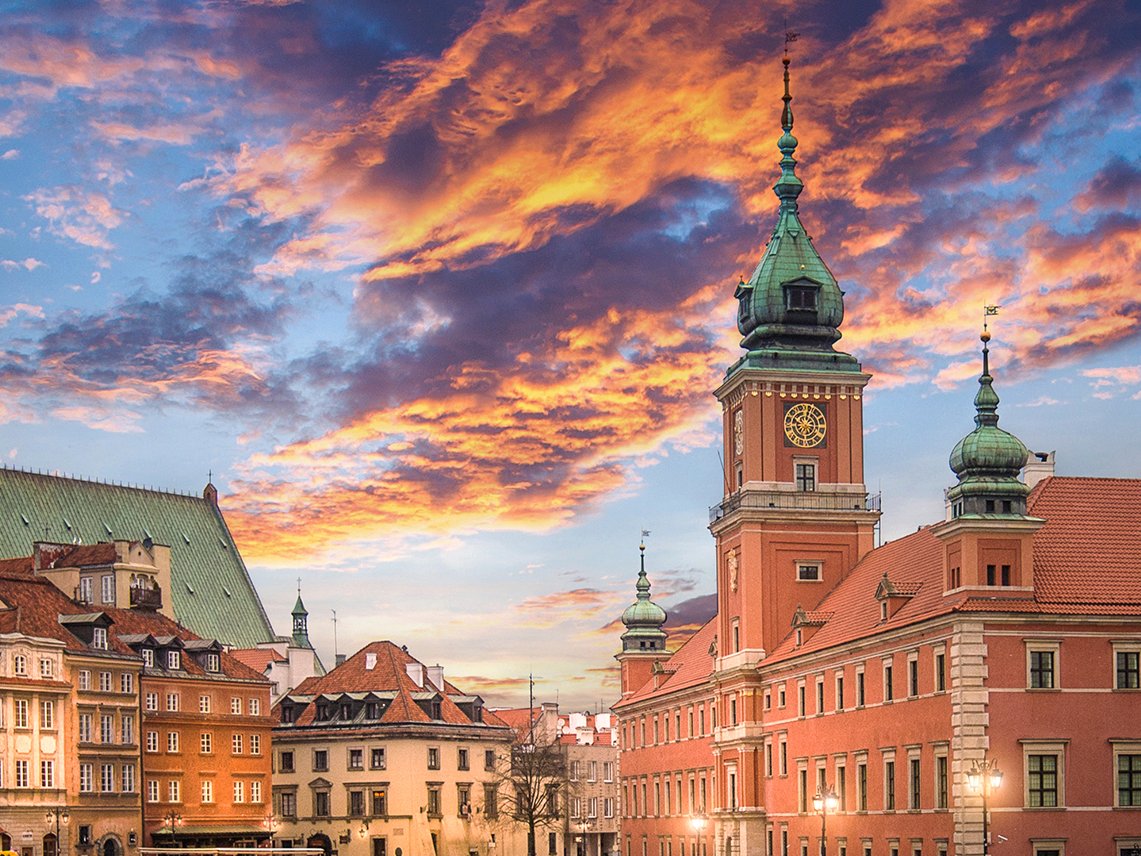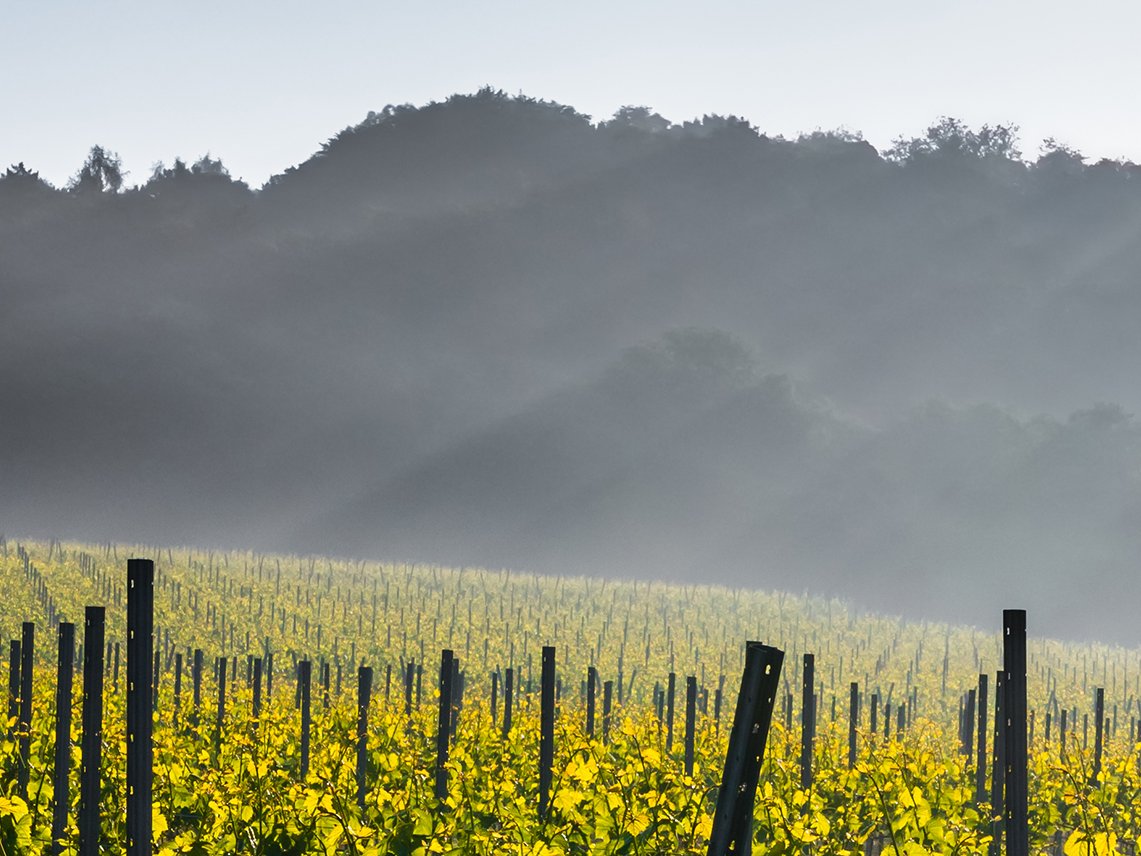Long weekend in Warsaw
Falstaff has compiled a comprehensive guide on how to spend a perfect weekend in Warsaw.
The capital of Poland has many faces: the streets of the old town and new skyscrapers; surprising haute cuisine and food halls in renovated factories; palaces of kings and urban streets that resemble West Berlin. To understand all the nuances of local life, we compiled a guide on how to spend a perfect weekend in Warsaw.
Friday
Classic Warsaw: Old Town, interactive museums, fine dining restaurants, and views from Stalin's skyscraper
The first thing that comes to mind for most people who find themselves in the capital of Poland is to take a walk in the Old Town – Stare Miasto. And this is definitely a winning idea that should not be put off for later. The most logical move is to get there through the streets of Nowy Świat and Krakowskie Przedmieście; there is probably no better and more impressive way to the Stare Miasto or Starówka. Slowly passing through the main building of the university, the presidential palace, the monument to Nicolaus Copernicus, and two of the most impressive Warsaw hotels, Raffles Europejski and Bristol, you will find yourself on Plac Zamkowy. Local panoramas are featured on almost every other postcard of Warsaw – tiled roofs, the castle square with Sigismund's Column, and of course, the Royal Castle.
The heart of the Old Town is the market square or Rynek Starego Miasta, in the centre of which is one of the main symbols of Warsaw, the mermaid. Every building here is restored, hand-painted, and polished almost to a shine, and around all this splendour there are quite a few tourist restaurants. Just remember this view, and imagine that about 80 years ago, after the Warsaw Uprising, there were only ruins here, and each building was practically rebuilt from scratch. After all, the Old Town of Warsaw is included in the UNESCO World Heritage List as “an exceptional example of the complete reconstruction of a city deliberately destroyed to its foundations”.
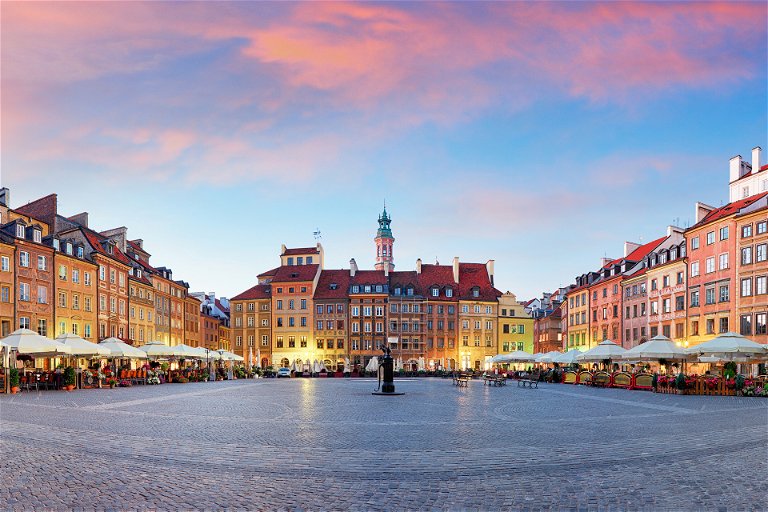
After walking through the Old Town and passing the walls of the Barbican, you will find yourself in the “New Town” or Nowe Miasto – a neat, slightly provincial area that is not as polished as Stare Miasto. Here you can feel the spirit of old, pre-war Warsaw: monumental and non-touristic. Turning from the New Town Market Square (take a closer look at the local entrances, each has its own personal coat of arms in the form of an animal) onto Kościelna Street, you will come to the monument of Marie Skłodowska-Curie and the hill that overlooks the Multimedia Fountain Park. In the summer, multimedia laser shows are held right on the surface of the fountain, with legendary tales of the origin of Warsaw and other myths.
Now is the perfect time to head to another iconic building of Warsaw – Pałac Kultury i Nauki or the Palace of Culture and Science. To make the journey more beautiful, we will go there from Nowe Miasto through Ogród Krasińskich, one of the most picturesque parks in this part of the city, created in a classical baroque style, with a small pond and a palace. After passing through the park, you will find yourself in the area of the former Warsaw Ghetto: if you look carefully at the ground, you can see a very peculiar monument – a metal line with the dates 1940-1943, which outlines the boundaries of the ghetto territory where all Warsaw Jews were forcibly held during the German occupation. There is still a small Jewish district here with a theatre, shops, and cafés. Passing through it, you will end up near the Pałac Kultury i Nauki, “gifted” to the Poles by Joseph Stalin. Currently there are several museums, restaurants, bars, and a very atmospheric cinema inside, as well as an observation deck on the 30th floor. The Poles themselves like to joke that it is the best observation deck in all of Warsaw because this is the only place in the city where you cannot see the huge Stalinist skyscraper.
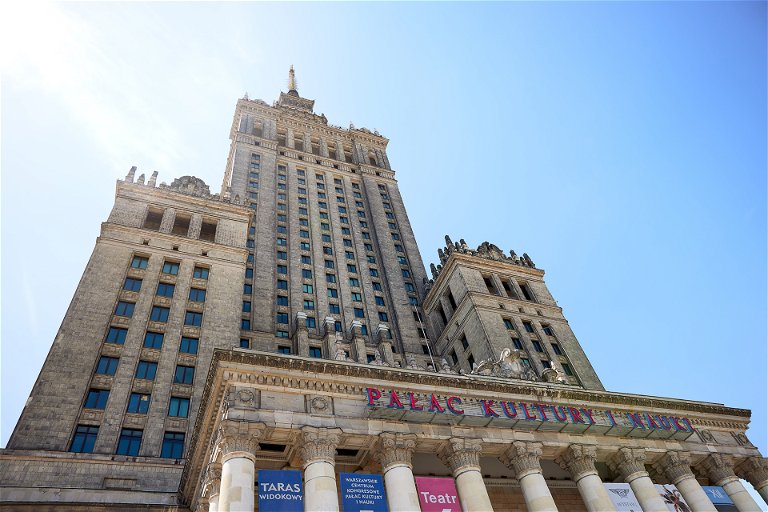
Where to eat and drink
Recently, Falstaff told you about the 10 best restaurants in Warsaw, so for a gastronomic introduction to the Polish capital, you can easily choose one of them. Our personal choice for the Friday route is Epoka (Ossolińskich 3), ideal if you love the fine dining format and are ready to spend a few hours for dinner.
Two set menus are served here: Short History (87 EUR) and History (119 EUR), wine and non-alcoholic pairings for an additional fee. Each course is a fully-fledged excursion into the past of Polish cuisine.
Another slightly more democratic option is the noisy Bibenda (Nowogrodzka 10), located not far from the Pałac Kultury i Nauki.
Grilled eggplant with caponata, straciatella, crispy mint, Thai basil and pine nuts, Polish "Kopytka" - smoked cheese dumplings with fermented garlic honey, leeks, cold-pressed rapeseed oil, polish dukkah and dill, or roasted Ramiro peppers with tonnato sauce, capers, caper berries, and Jerusalem artichoke crisps – you just need to order a good part of the menu, spread the plates all over the table, and taste, discuss and savour everything over a glass of wine
A stop for an excellent coffee can be made at Forum (Elektoralna 11), or one of the Coffeedesk cafés (Próżna 7).
Cultural program
For those who want to learn more about the history of Warsaw and find out why the entire city centre was razed to the ground, we highly recommend visiting two museums. The first is the Warsaw Uprising Museum (ul. Grzybowska 79) where you can learn all about the most important and terrifying events that Warsaw experienced during World War II. Here you can not only see but also experience what the residents of Warsaw felt during the 63 days of the uprising, striving to liberate themselves from the Nazi regime. The second museum, closely related to the history of Poland, is the POLIN Museum of the History of Polish Jews (ul. Mordechaja Anielewicza 6). Modern and interactive, it will tell you the full story of Polish Jews in various settings – from the just-emerging market squares of old Krakow to the paved streets of Warsaw on the very day that World War II began. Therefore, POLIN, which was named ‘the best museum in Europe’ in 2016, at the very least is a must-see for all those who find themselves in Warsaw.
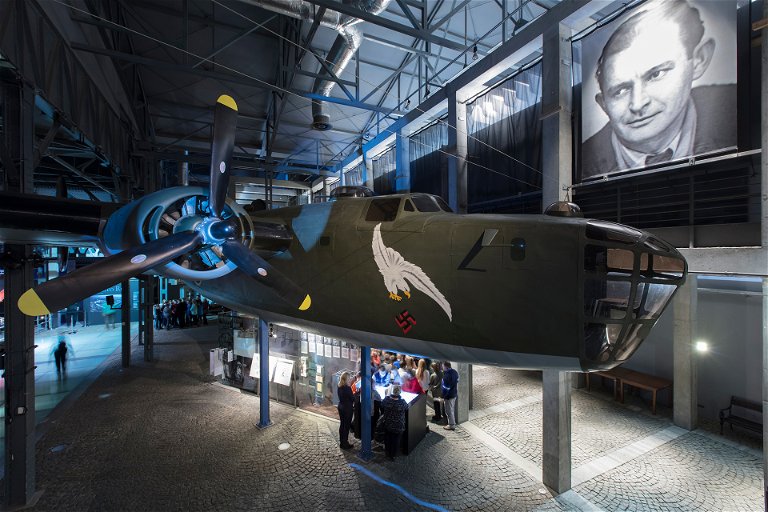
Saturday
Modern and alternative Warsaw – rooftop gardens, modern art, creative districts, local spots and food halls
After the classic sights, let's move on to the most interesting part: modern Warsaw. Today we will be exploring non-touristic neighbourhoods, food spaces, unusual museums, and much more. Let's start with one of the most impressive gardens in the whole city – Ogród Biblioteki Uniwersytetu Warszawskiego (Dobra 56/66), which is not located near palaces or castles as usual, but on the roof of the university library itself. The garden boasts a huge amount of greenery, perfect planning and maximum photogenicity from every angle. By the way, Ogród Biblioteki Uniwersytetu Warszawskiego is one of the largest rooftop parks in Europe, covering an entire hectare. Inside the library building, you can also find a lot of interesting things, from exhibitions to a wonderful shop of antique Polish posters and postcards. And of course, the library itself is open, although entry is only possible with named membership tickets. The garden's opening hours vary with the season: in winter, it is open from 8am to 3pm, and in summer, you can stroll there until 8pm.

Once near the library, you must definitely go down to the Vistula river or Wisła and take a walk along Bulwary Wiślane. The modern and very impressive embankment is equipped with everything you can imagine: an observation deck, hammocks, places to relax, trampolines and statues, art installations, and a decent number of various cafés and restaurants.
Right here, in the industrial building of the former power station, is Elektrownia Powiśle – a renovated modern space that combines a shopping centre and a huge food court; nearby are the Museum of Modern Art, Muzeum Sztuki Nowoczesnej, and the excellent Copernicus Science Centre (which we recommend visiting with children).
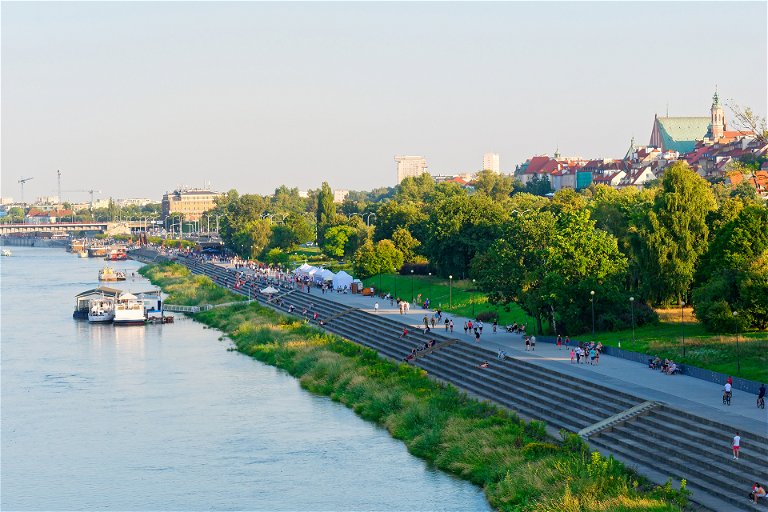
From here, we will change the direction of our walk and move to the right bank of the Vistula. The easiest way to do this is to go down to the Centrum Nauki Kopernik metro station and take a couple of stops to Dworzec Wileński. This area is called Praga-Północ, and everything here is completely different. Firstly, you are in an area that was practically untouched during World War II; there are many old but unrenovated buildings here. Secondly, there are a lot of informal places and no less informal people here: it's all reminiscent of West Berlin, with its graffiti, abandoned buildings, and a rather specific atmosphere. Bazaars, artists’ workshops, squats, shot bars and trendy establishments – everything seems to be mixed together. To better feel this vibe, take a walk down Ząbkowska Street, visit the trendy Centrum Praskie Koneser district, recreated on the site of a liqueur-vodka factory founded back in 1897 (by the way, there is also a vodka museum here), and be sure to head to Stalowa Street, at the very end of which there is one of the best artisan bakeries in the city, Rano (Stalowa 47). You need to get here before 1pm – like many other bakeries in Poland, Rano only works half a day on Saturdays. Alternatively, there is the cult bagel shop Serso (Józefa Szanajcy 16), as well as the modern Polish neo-bistro with a brilliant selection of natural wines, Źródło (Targowa 81/106).
Where to eat and drink
We have already mentioned several cult places in our guide to the Praga-Północ district, so now we will talk about food halls and gastronomic spaces in Warsaw, which with every year are becoming more and more numerous in the city.
Hala Koszyki
This is perhaps the main (and liveliest) modern space in all of Warsaw, where bars, restaurants, and shops of all kinds are mixed together in a whimsical kaleidoscope. There are so many ways to spend an evening here: you can arm yourself with oysters and sparkling wine, grab an excellent vegan burger or, for example, have an authentic Indian dinner of butter chicken with naan bread. In addition, at Hala Koszyki, you can find a good bookstore, an organic-eco shop, designer stores and, of course, a giant bar counter in the centre of the room.
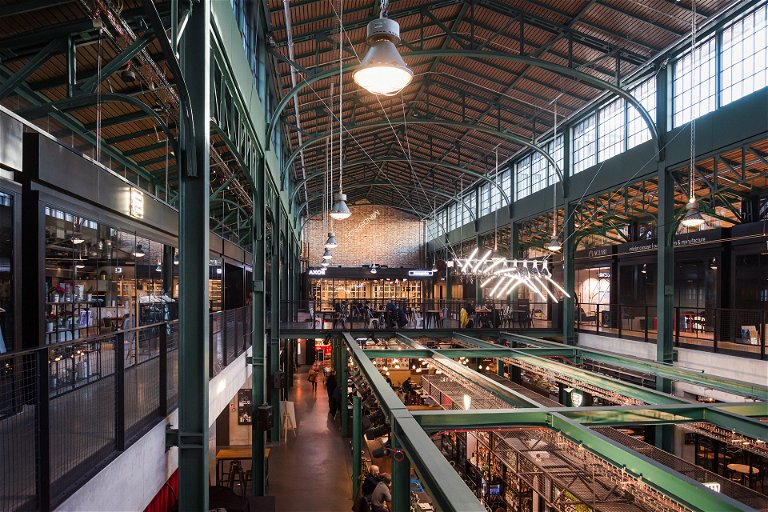
Hala Gwardii
Another renovated historic building that used to house a marketplace, but now bubbles with Warsaw’s cultural life. There is no secular gloss or tricky decors here: everything is simple and unobtrusive. This, by the way, is what attracts people to Hala Gwardii the most. The place has a huge number of food corners, a fully-fledged, albeit small, grocery market, and a decent number of bars and cafes where you can drink beer (mostly Polish and craft) or wine.
Fabryka Norblina
Another place of power on the map of Warsaw with a rich history, interesting architectural solutions, and a huge restaurant city inside (thus it is called ‘Food City’). There are 23 gastronomic projects from all over the world here: Europe, the Middle East, Southeast Asia – it seems that you can find any cuisine in the world here. It is not surprising that Food City in "FabrykaNorblina" is the largest restaurant space in the entire capital of Poland.
Browary Warszawskie
You should definitely visit Browary for several important reasons. Firstly, this is one of the most interesting architectural projects in Warsaw in recent times: it is beautiful, to say the least. Secondly, the number of interesting restaurants and cafés here is simply overwhelming: there are trendy coffee shops, Greek taverns, tapas bars, elegant Japanese establishments, a fully-fledged food hall and, of course, a huge beer project (simply because in the space called "Warsaw Brewers", there must be a brewery).
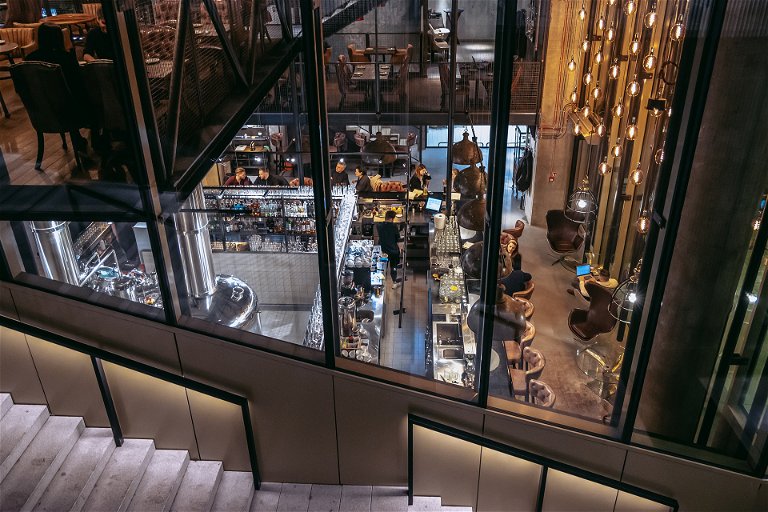
Fort 8
A chic and modern project located in a restored military fort – what could be better? We agree, not much. And at "Fort 8" they confidently prove this axiom day after day. It's great to come here just for a walk or to visit one of the local restaurant projects, ranging from a steakhouse or sushi bar to a workshop of author desserts and a whisky tasting room. Moreover, they often hold interesting events here, such as free movie screenings, seasonal exhibitions, and even improvised picnics. And the fort itself, to be frank, is a very picturesque place.
Cultural program
A perfect continuation of a laid-back day would be a visit to Zachęta, perhaps the most famous contemporary art gallery in all of Poland. It boasts a rich collection of Polish creators – artists, graphic designers, sculptors, and video installation makers. Temporary exhibitions are also often held here – mostly unique and unusual. By the way, thanks to Zachęta, a fully-fledged Polish pavilion appeared at the Venice Biennale, which is great both for itself and for all contemporary art in Poland.

Sunday
Chillout parks, the suburbs, and a dinner on the platform of a closed railway station
Another important part of Warsaw is its parks. No wonder the capital of Poland is in the top 10 greenest cities of Europe. Therefore, we will start the day with a visit to Łazienki Królewskie, the main park in Warsaw and a beautiful museum at the same time. The size of Łazienki is truly staggering: an incredible amount of interesting places is spread over 76 hectares. The Chopin Monument near a small pond, neat green paths, peacocks leisurely strolling by the lake, the Old Orangery, the Myślewicki Palace, the White House, the Chinese Garden and, of course, the pearl of the entire park ensemble – the Palace on the Water – all this really needs to be seen with your own eyes. Keep in mind that during the summer, free live Chopin concerts are held on Sundays at 12:00 and 16:00. If you get hungry after the walk, we recommend stopping by the Po Drodze café (Bagatela 11) or the truly authentic and wonderfully crazy Thai eatery Ahaan (Plac Unii Lubelskiej 1) – they are literally a five-minute walk from the main entrance to Łazienki.
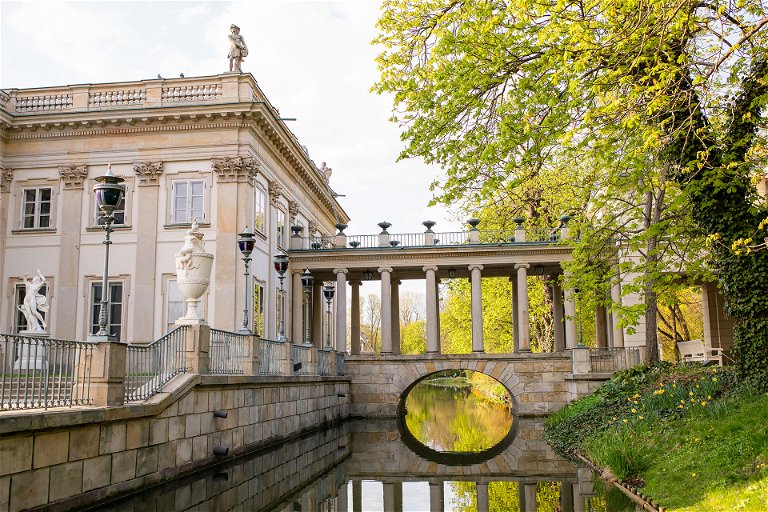
A classic Warsaw tourist program usually includes a trip to Wilanów, the former summer residence of Polish kings. The palace, built in 1677 for Jan III Sobieski, was built in impeccable Baroque style; nearby is a beautiful well-kept park, an orangery, and a small lake. Yes, all of this is beautiful and grand, but we recommend going a little further and visiting the cosy town of Konstancin-Jeziorna near Warsaw: it takes about 15 minutes to get there from Wilanów.
Antique villas coexist here with modern townhouses, elegant restaurants, tiny cafés, with the amount of greenery tending towards absolute greatness. But the main attraction of this town can rightfully be considered the Park Zdrojowy and the unusual structure made of stacks of brushwood, which is located in its very centre. It is called Tężnia. The secret of this wonder is simple: underneath the park is a huge salt lake, the water from which is pumped and sprayed around the area by special pumps. As an aesthetic bonus, there is a combination of healing salty air and the pine scents of the local forest (predominantly pine). Not far from Konstancin-Jeziorna, in the town of Powsin, there is a botanical garden that you can visit if you happen to be nearby.
Where to eat and drink
Since we've spent most of the day outdoors, the gastronomic part of the program should follow the pattern. Therefore, on Sunday evening, you can head to the closed platform of the railway station in the centre of Warsaw. Here you can find Nocny Market – a chic pop-up project that operates only in warm season, from 5pm until late evening. Nocny Market is considered the largest and the most colourful event in Warsaw when it comes to perfect street food: all of the trendiest establishments in the city try to open a corner here.
As an alternative, we can suggest taking a stroll along one of the main restaurant streets of the city, Poznańska Street, and choosing a place to your liking, or again using our list of the best restaurants in Warsaw. For example, you can pop into Rozbrat 20 (Rozbrat 20) for a set menu.
Just the Rozbrat 20's motto itself – courage, madness and unique taste – immediately lets you know that the experience will be interesting. Bisque with shrimp and rhubarb? No problem! Eel with black garlic and seaweed? Sure thing. Blood sausage with pineapple and chicken skin? Make it two. Chef Bartosz Szymczak surprises the local audience season after season, focusing on unusual ingredient combinations.
Cultural Program
After listening to Chopin's concert in Łazienki, you can visit the museum dedicated to one of the main Polish classical composers (Okólnik 1 opens after renovation on April 28). It is made as modern as it can be: audio and video installations, tactile objects, unusual concerts, and the most unexpected ways to look at Frederic Chopin from a new perspective.
Now that you have literally seen the Polish capital from all sides, we recommend visiting one of Warsaw's main museums, Muzeum Narodowe (Aleje Jerozolimskie, 3). Here you will find a huge collection of Polish (and none Polish) paintings, a separate hall dedicated to Catholic relics and icons, an amazing section with Polish design and furniture items, antique clothing and household items, and much, much more. For dinner, you can go to the Muzealna restaurant, which is located in the same building on the first floor. Inside, there is a perfect combination of the new wave of Polish design and art with local products and a bold interpretation of Polish cuisine.
